 Approved by Dr. Dwight Alleyne, DVM
Approved by Dr. Dwight Alleyne, DVM Dogs & Cold Weather: How Cold Is Too Cold For Dogs?
Can you tell if your dog can handle cold weather? Find out the potential risks of dogs and cold weather - including how snow can mess with your dog's sense of smell & increase their risk of getting lost.
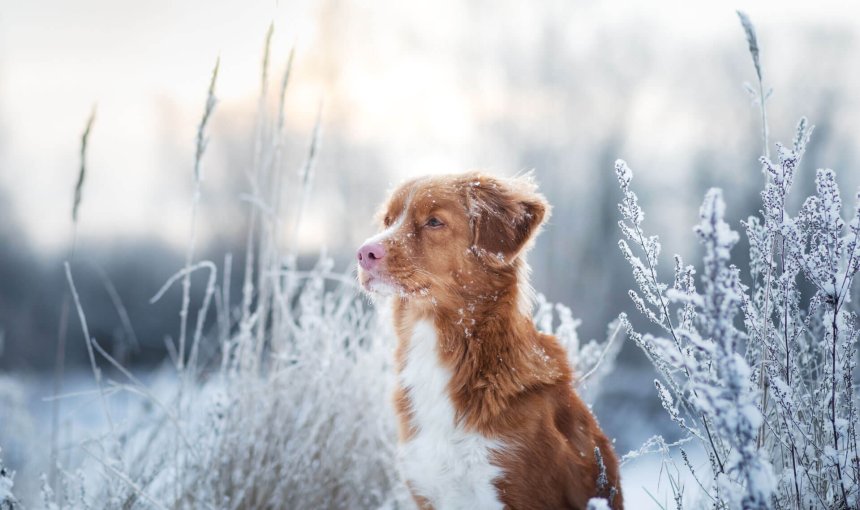
Planning a hike or a ski trip this fall or winter? Taking your buddy along is always a great idea – to keep them both physically and mentally active. But are they going to enjoy the cold just like you? In fact, how cold is too cold for dogs?
Your dog might be a trooper and soldier on through the cold – or might run off yelping at the first touch of snow on their paws. Besides, snow and cold weather can both mess with your dog’s sense of smell – which can increase the chances of them getting lost if they run off.
So in this post, we’re going to cover how cold is too cold for your dog and some other tips – so you can safely enjoy winter with your fluffy family. Let’s get started.
- How cold is too cold for dogs?
- Which dogs are sensitive to cold weather?
- Signs that your dog is too cold
- How you can catch on to a dog’s cold early on – with Tractive
- How to keep dogs warm in winter
- Don’t let your dog get lost in the cold
- Wrapping up: Caring for your dog when it’s cold outdoors
- More tips for caring for dogs in winter
- Dr. Dwight Alleyne, DVM
How cold is too cold for dogs?
As a general rule of thumb:
- at 45°F (7°C) and below, most dogs will dogs will start to become uncomfortable
- at 32°F (0°C) and below, small, thin-coated, young, old and sick dogs should not be left outside for long
- at 20°F (-7°C) and below, dogs become vulnerable to hypothermia and frostbite1
There’s no one answer to the question – how cold is too cold for dogs. Rather, different dogs tolerate cold temperatures differently. Some dogs love snow and cold weather, while others get cold very easily and can not stay outside in the cold for very long.
But in general, your dog’s ability to withstand the cold depends on factors like their:
- breed,
- size,
- body fat,
- fur,
- overall health and medical condition,
- and whether they’re an indoor or outdoor dog.
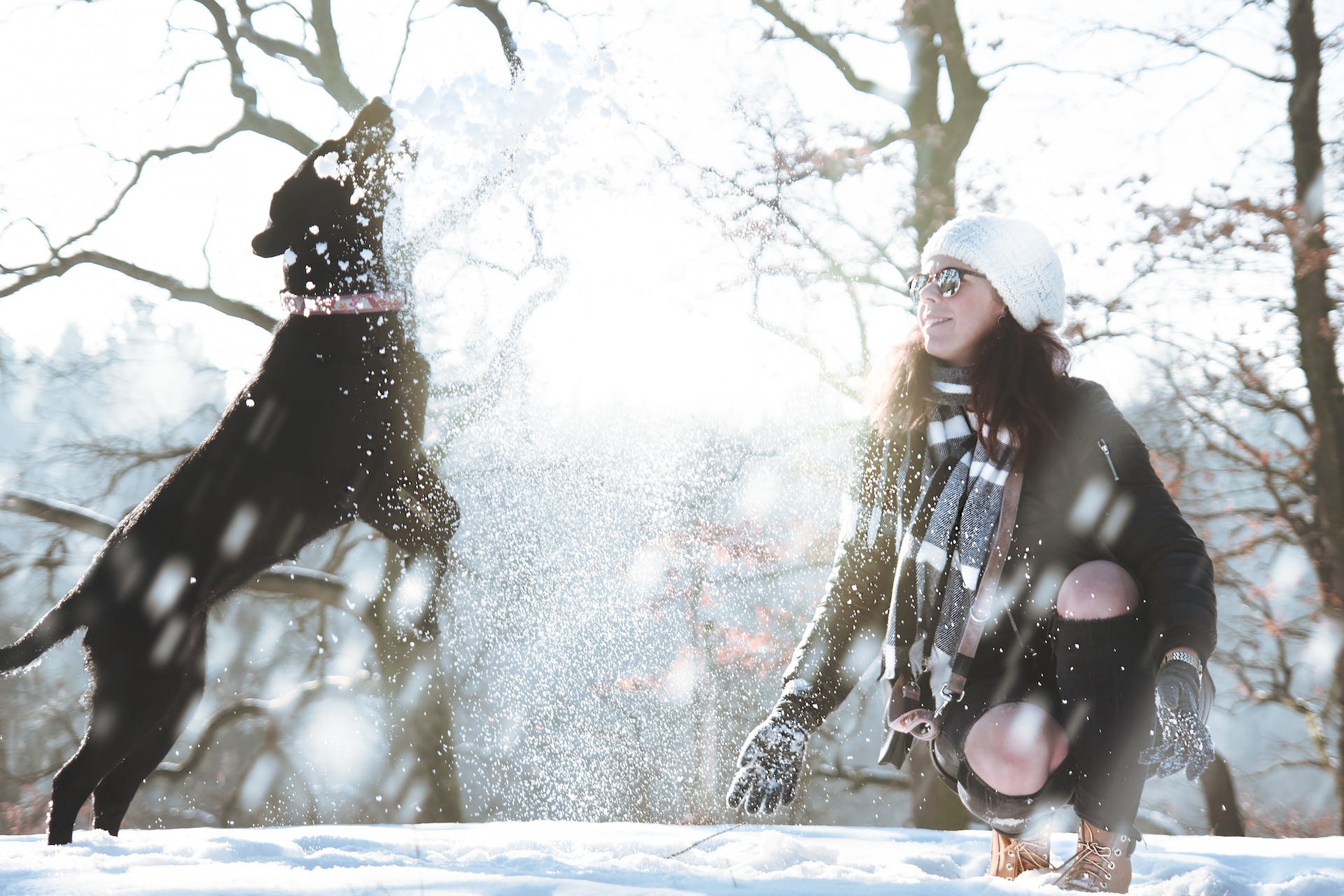
Which dogs are sensitive to cold weather?
Dog breed and health are big factors when it comes to risk of freezing. The following dogs are considered especially sensitive to cold temperatures. In other words, we need to take extra care of these vulnerable dogs and make sure they keep warm in the cold winter months:
- small dogs
- short-haired and hairless dogs
- puppies
- senior dogs
- indoors ‘pet’ dogs
- dogs with a medical or heart condition
- dogs with arthritis and joint problems
- Dobermen, Boxers and Greyhounds
To some degree, all dogs are vulnerable to the cold. Paws, nose, ears and the stomach region are generally unprotected and therefore quite sensitive in all dogs.
So make sure your dog’s paws are properly maintained, for example, by applying paw balm before going for a short walk outside and by removing the dirt when returning home. (Like, for example, Vets Preferred Paw Balm or Paw Nectar by QualityPet.)
In general, you can use your dog’s size to determine how cold is too cold for them, using the graphic below:
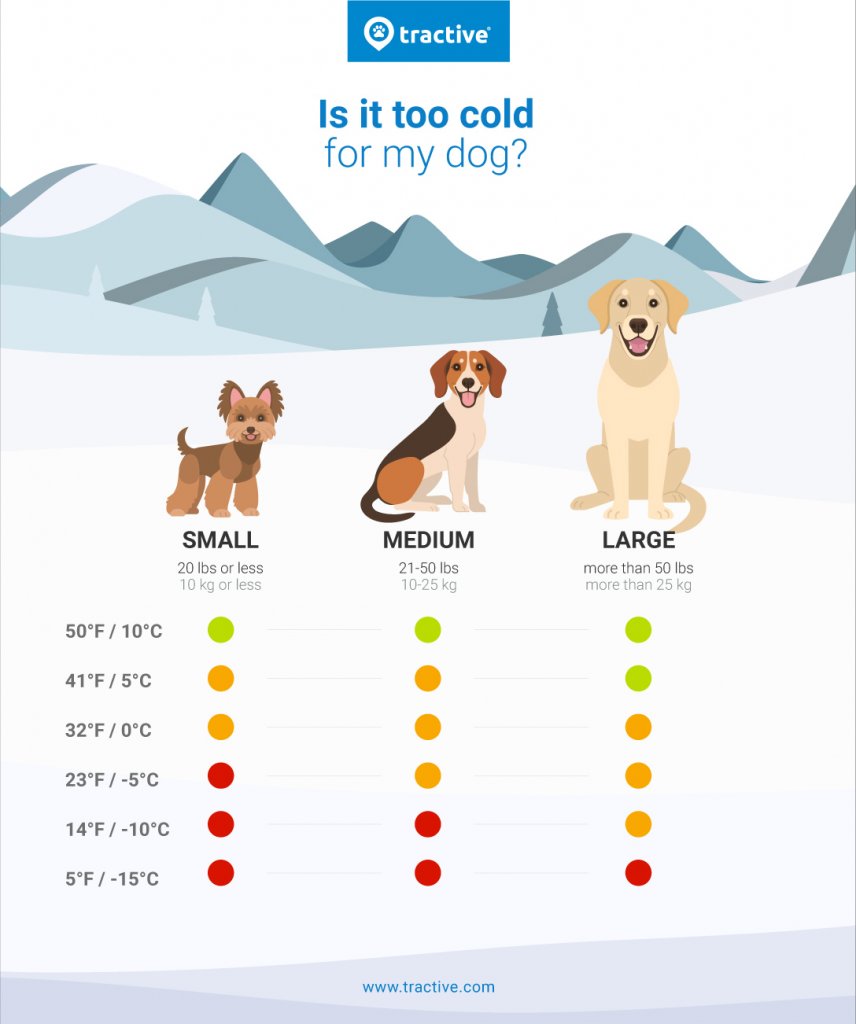
Signs that your dog is too cold
As soon as your dog begins to tremble, they are already too cold. When your dog starts to freeze or become too cold, they may:
- feel unwell, tremble and walk slowly
- take a cramped posture
- cuddle on your leg or on another heat source
Be careful not to leave your dog outside in cold temperatures for too long, otherwise they may catch a cold.
🌡️ Good to know: A dog’s normal body temperature is anywhere from 99.5 to 102.5°F (38.3 to 39.2°C).
Signs that your dog has a cold:
Yes, dogs can catch colds, just like us! Being exposed to cold weather can affect your buddy’s immune system. But the good news is, it’s usually not the primary cause for a dog catching a cold or upper respiratory infection.
Keep an eye out for these signs:
While these symptoms may indicate your dog has the canine cold virus, they could also indicate a more serious condition, such as dog flu (influenza), bronchitis, parainfluenza, or distemper². Be on the look-out if your dog displays these symptoms after being in the cold, and take your dog to the vet if you suspect they are sick.

⚠️ Don’t forget to dry your dog thoroughly after being outside in the cold weather so they can quickly get back to their normal body temperature.
Hypothermia in dogs
If your dog is exposed to low temperatures for longer periods of time, they could also suffer from hypothermia. This can be experienced locally, for example, freezing ears or paws. An overall hypothermia of the body can cause deep organ damage and even be deadly. Signs of severe hypothermia include tight and dilated pupils, difficulty in breathing and even coma.
How you can catch on to a dog’s cold early on – with Tractive
One of the first signs your dog might have a cold is if they seem more lethargic than before – or generally more listless. But hey, we all tend to get a bit less active during the winter months, right? Well, in the case of your dog, their drop in activity could signal something more serious. And if you’re able to catch on to a change in their behavior early on, you can get them to a vet that much quicker.
It’s why vets recommend tracking your dog’s activity levels – or how much they can keep up with you. Senior dogs, for example, might be less active anyway, which can make it easy to miss signs of illness or discomfort. But if you track observable behaviors like your dog’s activity, you can better catch on to a spike or a dip – and take action early on.
Tractive pet parents around the world are staying on top of their dogs’ health and wellbeing with our Wellness Monitoring features. Like this one who observed a change in her dog’s behavior from her Wellness profile – and narrowly avoided a medical emergency:
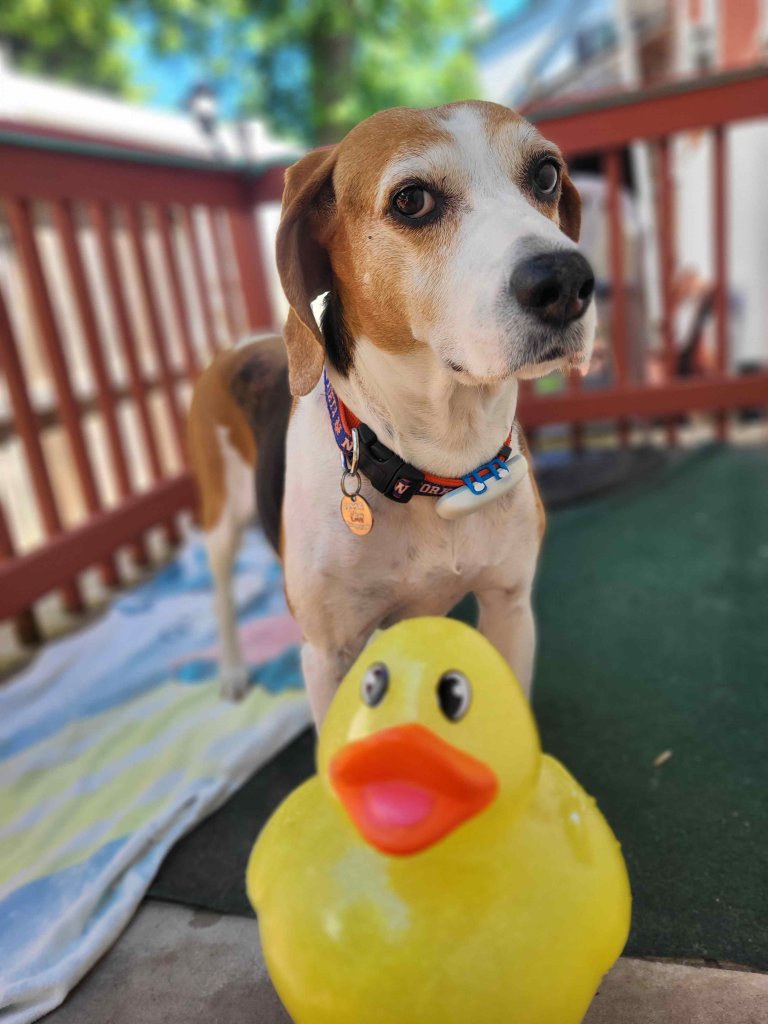
“When I looked at Ruby’s Wellness profile, the data showed that her activity level was low and that she hadn’t slept well. I was concerned and watched her carefully.
Early the next morning, she had blood in her urine and was lethargic. We visited the emergency veterinarian, and Ruby was diagnosed with a UTI.
She received antibiotics and pain medication and is feeling much better. Her tracker data made me aware that she was not acting normally and that something could be wrong with her.
I love her tracker, and I will always have one for any dog I ever own.“
– Katie J, Delaware
Get Tractive GPS & Health Tracker

“It can be easy to miss out on changes in your dog’s or cat’s regular activity – or just if they’re on the move more or less than usual. So we’ve set up Activity Degradation alerts for when your pet’s active minutes drop significantly. They can help you intervene in a situation where your pet might be struggling with an infection or even just pain.”
– Sebastian Raab, Product Manager at Tractive & occasional pet-sitter
How to keep dogs warm in winter
To keep dogs warm in winter and protect them from cold or freezing, we recommend the following:
- Limit the time your dog has to spend outdoors in winter’s cold temperatures.
- Keep dogs who are sensitive to cold indoors, except for short potty breaks.
- Equip your dog with a weatherproof dog jacket for winter or suitable dog boots.
- Keep walks short, and keep your furry friend moving.
- Dry your dog as soon as possible, in case they get wet in cold temperatures.
- Make sure your dog has a warm, clean, and cozy place to sleep.
And lastly, most important of all…
Don’t let your dog get lost in the cold
Let’s not forget; many dogs will run away at the first chance they get. Puppies, young dogs, untrained dogs, or frightened dogs are very likely to bolt and leave you worried for their well-being. If your dog is lost in cold or freezing temperatures, this can be an especially dangerous situation.
Why is the case? Well, firstly, snow can mess with your dog’s sense of smell. In general, dogs can smell up to 12 miles (or 19 kilometers) around them on a good day. But even their olfactory superpowers can run into trouble if they’re in a dense, forested area. Snow, being dense, can create difficulties in dog’s sniffing their way home in case they run off. (Which, if you’ve got a snow loving dog who’s a puppy or untrained, might just happen if they find a big pile off in the distance.)
So if your dog runs off during the cold, snowy months, it’s wise to stay on top of their safety no matter how far they roam. Because of this, we’d recommend using both a microchip and GPS dog tracker on your dog at all times, so you’ll always be able to find and retrieve them in case they run away.
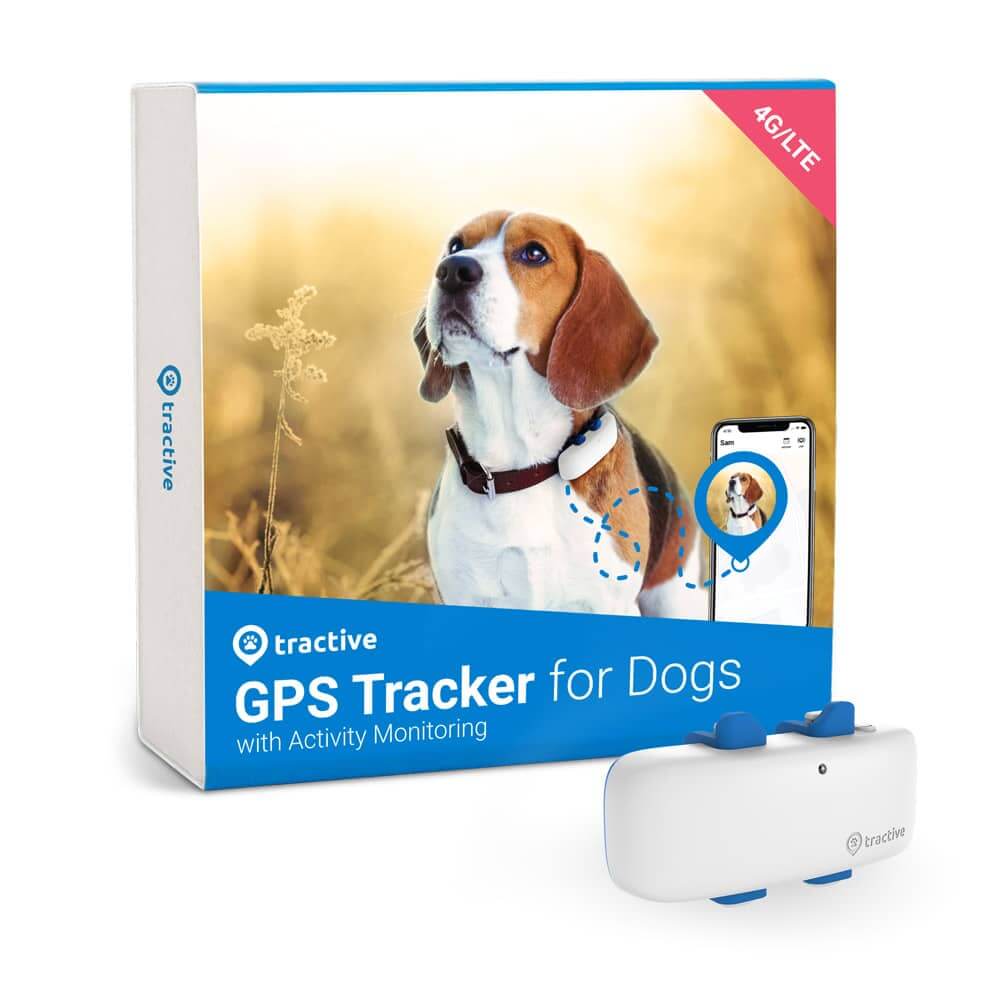
Always know where your dog is
Follow every step in real-time with unlimited range. Get alerts if they wander too far. Keep them happy & healthy with Wellness Monitoring. And let others – like walkers or sitters – keep an eye on your dog too.
📍 Remember: a microchip will help to identify your dog in case someone finds them, but a GPS tracker allows you to follow the location of your dog in real time.
Thus, a GPS tracker can be a life-saver in case your dog ever gets lost in cold temperatures. Read Bailey the Beagle’s story here:
Wrapping up: Caring for your dog when it’s cold outdoors
While some dogs are well-equipped for winter, others are very sensitive to the cold and should be kept indoors as much as possible during winter months.
- Make sure to keep your dog on the move. All dog breeds benefit from regular exercise, which you can stay on top of with Tractive’s Activity Monitoring features. This both helps your dog stay warm and also stay fit throughout the cold season.

- Keep your dog walks short. When it’s cold outdoors, keeping your furry friend on the move can help. Also consider playing some indoor games like hide and seek or tug of war to keep them entertained.
- Prioritize your dog’s paws. Keep them warm and dry as much as possible. Get your buddy a winter jacket or boots to protect against frostbite, dirt, and cold.
More tips for caring for dogs in winter
The Tractive blog is a great resource for learning how to best care for your furry friend. For more information about caring for dogs in winter, check out these articles:
- 8 Winter Dog Safety Tips
- Winter Holiday With Dog Ideas
- Dog-Friendly Winter Activities
- Dog Jackets For Winter
- Protecting Dog Paws From Winter And Snow
- Find Out If Your Dog Can Catch A Cold
- Dog Shedding In Winter: Is It Normal?
- Can Dogs Get Coronavirus?
And if you’re looking for more tips on caring for your dog when it’s cold outdoors, here are a couple:
Got a friend or loved one off skiing with their furry friend? Share it with them and help them keep their buddy safe and healthy.
Your furry friend’s health and wellbeing means as much as to us as it does to you. So we’ve made it a priority to only share medically-relevant content on our blog.
This post was checked, double-checked, and medically verified by Georgia-based vet, Dr. Dwight Alleyne.
Dr. Dwight Alleyne, DVM
Dwight Alleyne was born and raised in Long Island, New York where his love of animals began. His career for animals began working for a well-known no-kill animal shelter on Long Island.

He worked his way up the career ladder working as a kennel technician, veterinary assistant, and then becoming a licensed veterinary technician at the shelter.
His passion for veterinary medicine led to him applying to and being accepted at Cornell University Veterinary where he graduated from in 2006. After completing a small animal rotating internship at Purdue University, he eventually made his way to Georgia where he has been practicing ever since.
Dr. Alleyne has practiced at several small animal clinics throughout Georgia. He has a keen interest in soft tissue surgery and has extensive experience in performing ultrasounds including echocardiograms.
When he is not practicing medicine, Dr. Alleyne enjoys writing and editing pet health articles and providing pet advice through telehealth.
Dr. Alleyne also has his own blog called “The Animal Doctor Blog.” Check it out on: www.anmldrblog.com.




